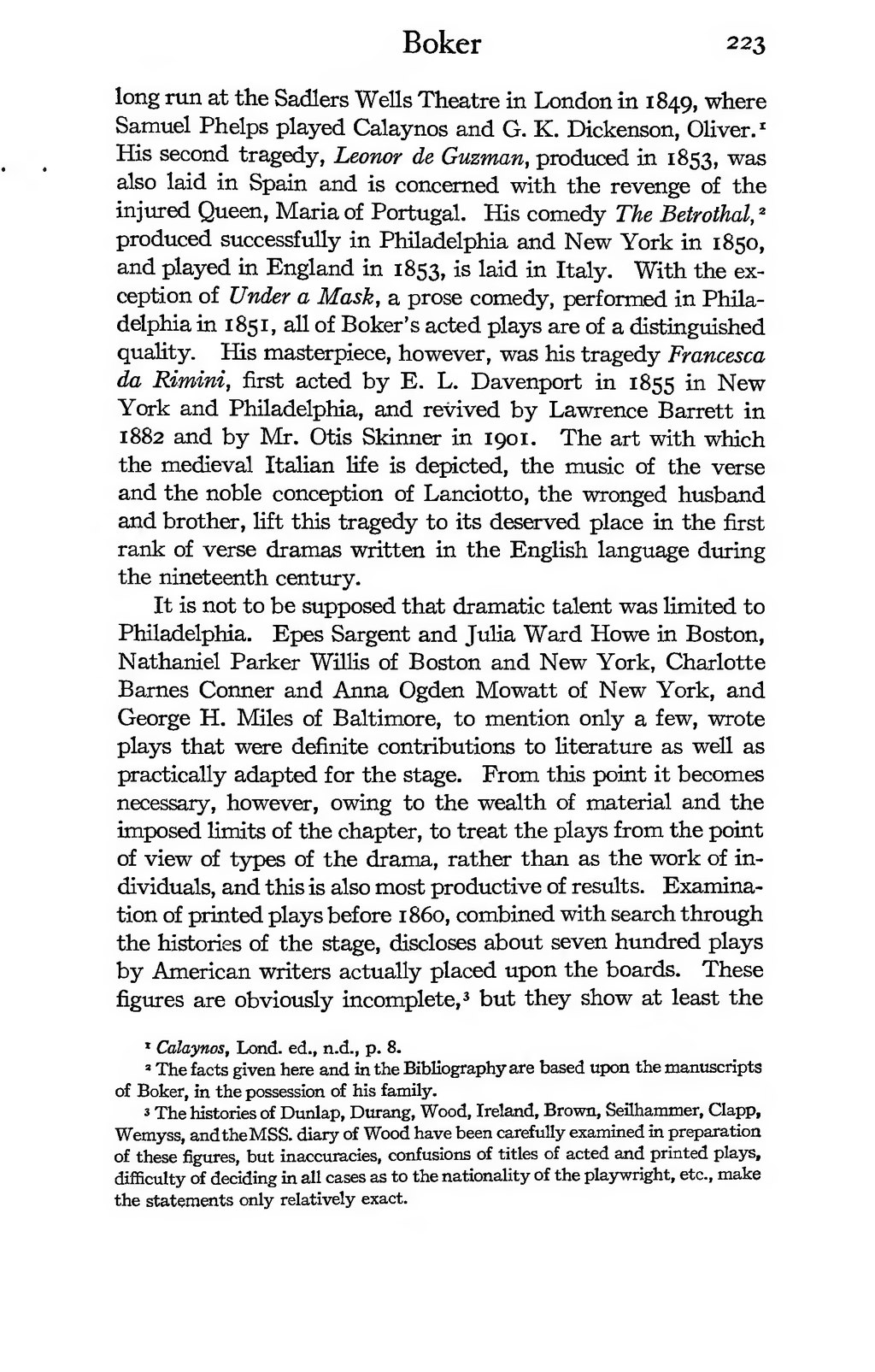long run at the Sadlers Wells Theatre in London in 1849, where Samuel Phelps played Calaynos and G. K. Dickenson, Oliver.[1] His second tragedy, Leonor de Guzman, produced in 1853, was also laid in Spain and is concerned with the revenge of the injured Queen, Maria of Portugal. His comedy The Betrothal, Calaynos, Lond. ed., n.d., p. 8.[2] produced successfully in Philadelphia and New York in 1850, and played in England in 1853, is laid in Italy. With the exception of Under a Mask, a prose comedy, performed in Philadelphia in 1851, all of Boker's acted plays are of a distinguished quality. His masterpiece, however, was his tragedy Francesca da Rimini, first acted by E. L. Davenport in 1855 in New York and Philadelphia, and revived by Lawrence Barrett in 1882 and by Mr. Otis Skinner in 1901. The art with which the medieval Italian life is depicted, the music of the verse and the noble conception of Lanciotto, the wronged husband and brother, lift this tragedy to its deserved place in the first rank of verse dramas written in the English language during the nineteenth century.
It is not to be supposed that dramatic talent was limited to Philaddphia. Epes Sargent and Julia Ward Howe in Boston, Nathaniel Parker Willis of Boston and New York, Charlotte Barnes Conner and Anna Ogden Mowatt of New York, and George H. Miles of Baltimore, to mention only a few, wrote plays that were definite contributions to literature as well as practically adapted for the stage. From this point it becomes necessary, however, owing to the wealth of material and the imposed limits of the chapter, to treat the plays from the point of view of types of the drama, rather than as the work of individuals, and this is also most productive of results. Examination of printed plays before 1860, combined with search through the histories of the stage, discloses about seven hundred plays by American writers actually placed upon the boards. These figures are obviously incomplete,[3] but they show at least the
- ↑ Calaynos, Lond. ed., n.d., p. 8.
- ↑ The facts given here and in the Bibliography are based upon the manuscripts of Boker, in the possession of his family.
- ↑ The histories of Dunlap, Ehirang, Wood, Ireland, Brown, Seilhammer, Clapp, Wemyss, and the MSS. diary of Wood have been carefully examined in preparation of these figures, but inaccuracies, confusions of titles of acted and printed plays, difficulty of deciding in all cases as to the nationality of the playwright, etc., make the statements only relatively exact.
